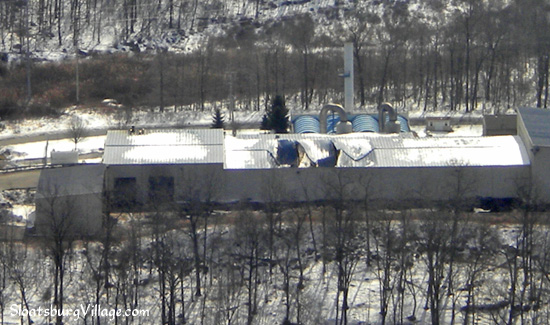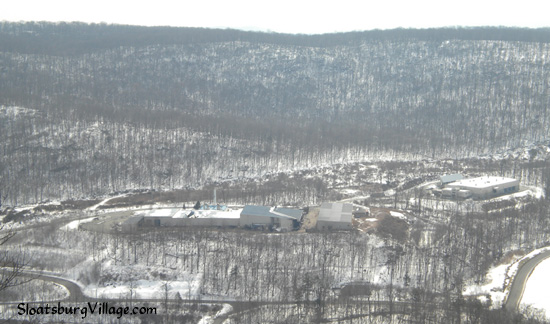The recent clear weather and attendant snow melt revealed an interesting issue at the Rockland County Co-composting Facility in Hillburn, NY. Two large sections of the facility’s roof apparently buckled and collapsed during February’s heavy snows.
“Most importantly there were no injuries,” said Solid Waste Education Kerri Scales about the roof collapse. Scales said that the incident is currently under review with an investigation underway to determine the cause of the roof collapse. Cost for repairs won’t be known until the review is complete.
 Two large sections of the facility’s metal roof are torn open, which has caused a shuttering of the facility. The Co-co Facility receives and recycles bio-solids from five wastewater treatment plants in Rockland County, as well as from Orange County’s Harriman Facility, including sludge from the Village of Suffern Water Treatment Center as well as Rockland Sewer District No. 1.
Two large sections of the facility’s metal roof are torn open, which has caused a shuttering of the facility. The Co-co Facility receives and recycles bio-solids from five wastewater treatment plants in Rockland County, as well as from Orange County’s Harriman Facility, including sludge from the Village of Suffern Water Treatment Center as well as Rockland Sewer District No. 1.
Bio-solids are mixed with clean wood waste at the facility’s buildings and then composted to produce a high grade, non agricultural compost product (Exceptional Quality – EQ) that is currently contracted out by Rockland County to We Care Organics.
The facility can also produce a specific malodorous waft, often on clear days, that blows through Torne Valley, and sometimes making its way to the edges of Sloatsburg.
The Co-co Facility has been closed since the roof collapsed. The facility currently still receives wastewater sludge, which is then shipped out for processing, according to Scales. With the Co-co Facility, Rockland County has been able to recycle biosolids from all of the county’s waste treatment centers, which in turn produces a revenue stream for the county via the We Care Organics contract.
The large quantities of compost eventually make their way to landscapers, golf courses and other mass consumers of high-end compost.
“Indications are that we are going to be back and running in the fall,” Scales said.




